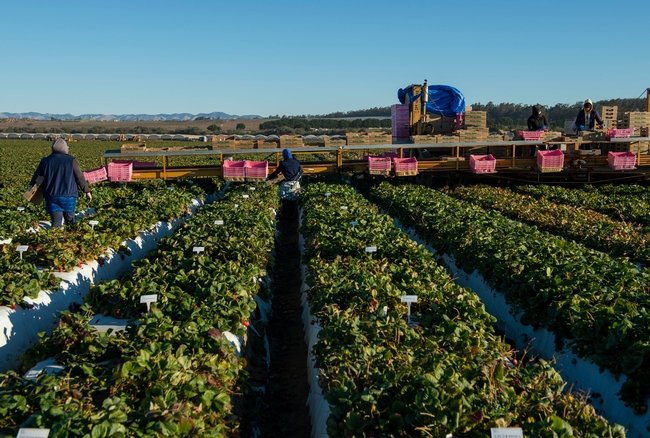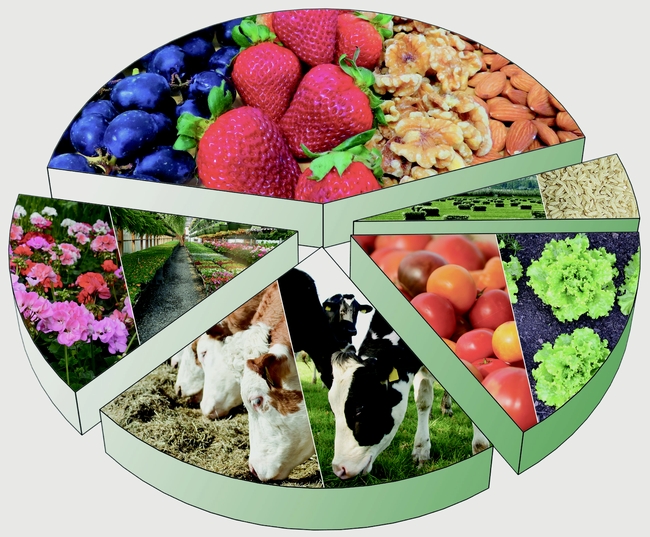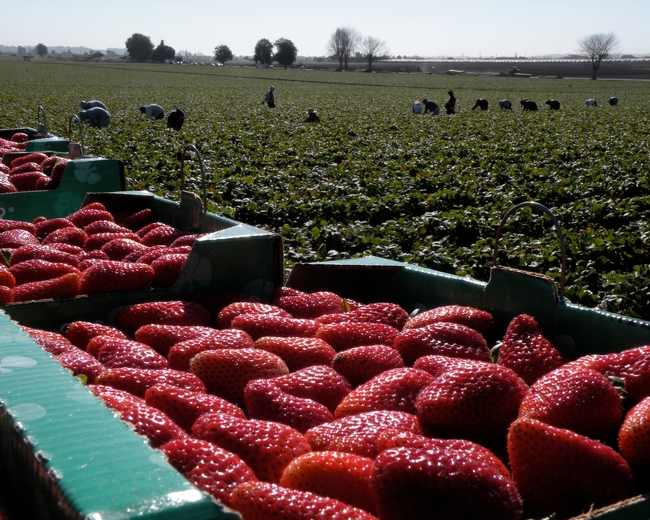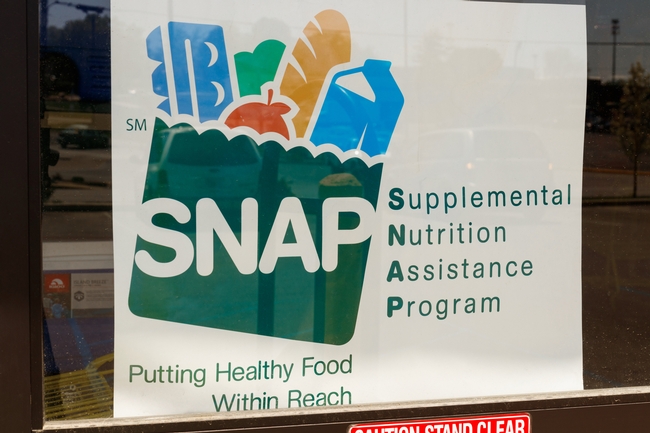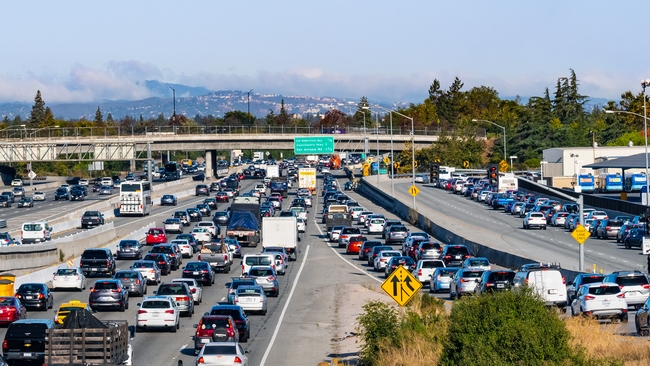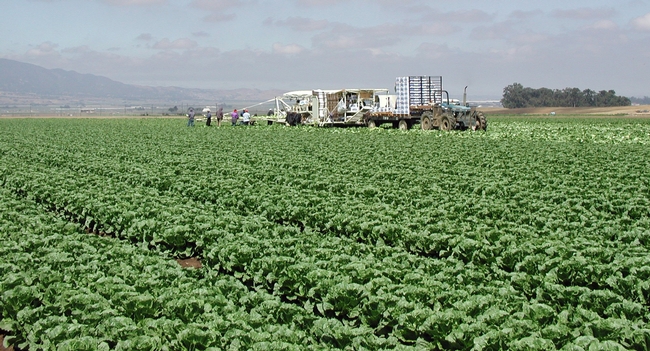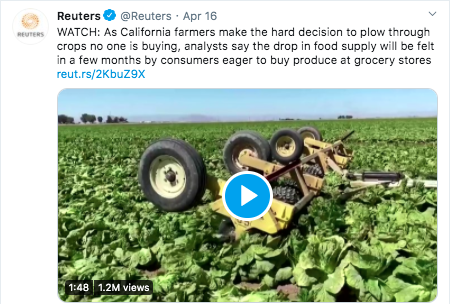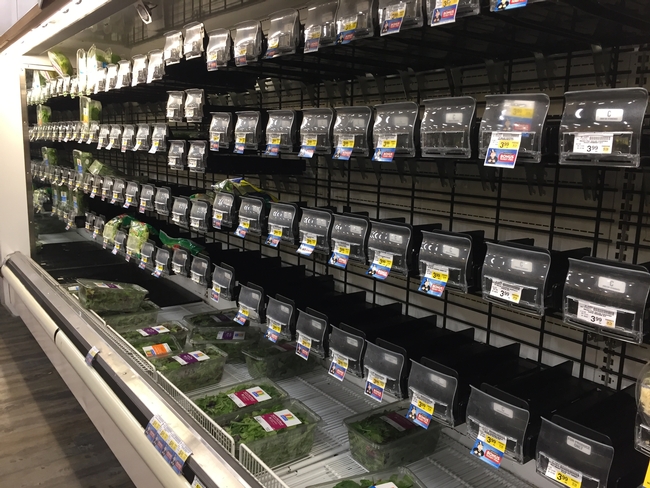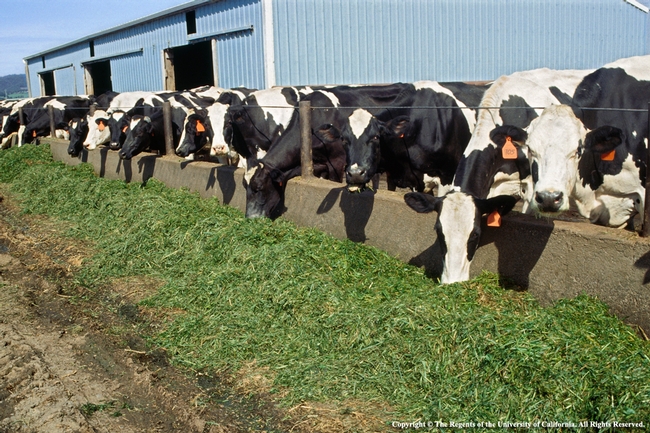Posts Tagged: coronavirus
UC conducts survey of COVID-19 prevention on farms
All California growers, ranchers, farm labor contractors and ag supervisors are invited to complete a short survey about their experiences addressing COVID-19? in the workplace. The survey is being conducted by the UC Davis Western Center for Agricultural Health and Safety.
The survey ?is anonymous, should take less than 10 minutes ?to complete?, and is available in English and Spanish at https://bit.ly/agCOVIDsurvey.
“At the UC Davis Western Center for Agricultural Health and Safety, we are working to respond to the COVID-19 crisis with practical resources for growers, ag employers, and farmworkers,” said Heather E Riden, agricultural health and safety program director. “The goal of this survey is to understand what practices farms are implementing to prevent COVID-19, where they have seen success, and where there may be challenges. We will take this information to assess whether there are new resources, trainings, or information that we can provide.”
Respondents are given the opportunity to share their contact information at the end of the survey.
“We plan to share any findings as well as new materials with anyone who expresses interest,” Riden said. “We will also summarize the results and post them on the WCAHS website.”
For more information about the survey, contact aghealth@ucdavis.edu. ?
Visit https://aghealth.ucdavis.edu/covid19 for COVID-19 training resources and employer guidance. The center's COVID-19 website offers farmers many resources, including an employer checklist and tailgate training discussion guide.
How has coronavirus pandemic impacted California food, agriculture and environment?
New report explores long-term effects of COVID-19 on state's cattle, dairy, produce, strawberry, tomato, nut and wine industries.
COVID-19 continues to affect parts of California agriculture in different ways. A new report from agricultural economists at the University of California examines the current and long-term impacts on California's leading agricultural industries.
Profiles in the report illustrate the different ways the pandemic has impacted dairy, beef and produce – industries that have scrambled to repurpose products from foodservice to retail – and tree nuts, an industry that saw a temporary spike in sales as consumers hoarded storable goods. The report includes expert assessments of what the future holds for California's cattle, dairy, produce, strawberry, tomato, tree nut and wine industries.
The studies are contained in a special coronavirus issue of ARE Update, a bimonthly magazine published by the University of California Giannini Foundation of Agricultural Economics. Contributors include several experts from the UC Davis Department of Agricultural and Resource Economics.
In addition to industry profiles, the report includes three articles addressing the effect of the pandemic on farm labor, food security, and traffic and pollution in California. The authors conclude that farm labor supplies are likely to be reduced due to the pandemic, hastening the trend toward mechanization. Authors of the study on federal nutrition assistance programs expect participants in these programs to face unprecedented economic hardship due to the COVID-19 pandemic. They suggest specific policy responses to reduce the impact. The study on vehicle traffic (and associated pollution) in California shows that travel dropped dramatically—by 40% to 60%—in California following the stay-at-home order, but then began increasing in mid-April, long before any restrictions on the stay-at-home order were lifted.
“Although the coronavirus pandemic continues to afflict most parts of the world, states and countries are attempting to reopen their economies and assess the damage that has been wrought,” said Richard Sexton, UC Davis distinguished professor and co-editor of ARE Update. “We look at the impacts on California agricultural industries and the implications for the environment and consumers, especially the most vulnerable among us.”
COVID-19 and farmworkers
No state relies upon agricultural labor more than California, where employment peaks seasonally in June. When stay-at-home orders were issued in March 2020 to slow the spread of COVID-19, farmworkers were deemed essential and expected to continue working.
As California's farm employment climbs toward its June peak, sick farmworkers, closed schools and uncertainties surrounding the H-2A guest worker program could reduce the supply of farmworkers, accelerating trends already underway such as mechanization.
Full article can be found at https://s.giannini.ucop.edu/uploads/giannini_public/c8/0a/c80aa637-6775-4bfa-9a64-bd680cc2dbce/v23n5_2.pdf.
Nutrition assistance programs
Processing plant closures, consumer stockpiling of key staple foods and other supply chain disruptions have raised serious questions about food security in the U.S. Enrollments in CalFresh, for example, are up as much as 80% in California from last year at this time.
The authors address the role policymakers, food banks and food assistance programs like the National School Lunch Program and Women, Infants and Children (WIC) can play in meeting food-security challenges now and in the future.
Full article can be found at https://s.giannini.ucop.edu/uploads/giannini_public/75/3d/753dcb99-8d44-4bd9-a668-b277a45456eb/v23n5_3.pdf.
Traffic, travel and pollution
Near real-time data can give key insights into how the pandemic and economic shutdown have impacted behavior in California. Using Caltrans traffic sensor data and Apple data, economists show that travel in California dropped precipitously when the stay-at-home orders were issued—down 40% to 80%, depending on the data source—but the rate of decline varied considerably by regions within the state.
While the stay-at-home order did reduce travel, the report found that the shutdown had no effect on fine particulate concentrations, a key contributor to air pollution.
Full article can be found at https://s.giannini.ucop.edu/uploads/giannini_public/30/4c/304cd12d-bcae-4ebb-8f5c-288695030eca/v23n5_4.pdf.
To read ARE Update's Special Issue: Implications of the Coronavirus Pandemic on California Food, Agriculture, and the Environment, visit https://bit.ly/ARECOVID19impact or https://s.giannini.ucop.edu/uploads/giannini_public/d4/e0/d4e0d72d-648c-4a0e-9048-cef6d9f2ba77/v23n5.pdf.
Commodity profiles can be found at
Strawberry: https://s.giannini.ucop.edu/uploads/giannini_public/6a/03/6a0331aa-30fe-47d6-97e7-1d6d437ec6fc/v23n5_10.pdf
Why are farmers destroying crops while store shelves are empty?
Empty grocery store shelves are troubling enough to California consumers who are accustomed to abundant supplies. To hear about farmers dumping milk, crushing eggs and plowing under crops when demand for food is strong just doesn't make sense to most consumers. Although the new coronavirus crisis has currently derailed the connection between supply and demand, “the food system in the United States is resilient and there is little reason for alarm about food availability,” write University of California agricultural economists.
Overall, neither food consumption nor the amount of food supplied by farms have changed much, they write in a new article published by UC's Giannini Foundation of Agricultural Economics. The authors explain that the sudden closure of schools, restaurants and other institutions, coupled with residents in many states sheltering in place to reduce the spread of COVID-19, has disrupted normal patterns of where people buy food.
“Price changes, surpluses and shortages along the food supply chain are likely the result of recent and temporary shocks to supply, demand or both,” said co-author Ellen Bruno, UC Cooperative Extension specialist in the Department of Agricultural and Resource Economics at UC Berkeley.
“On the demand side, we have seen customers shift to buying more food at the grocery store as restaurants and other food service businesses have closed. Plus, consumers have changed what they consume and stockpile during these times,” she said.
Initially, worried consumers stocked up on staples such as rice and pasta that store well. Then, with more free time, they started cooking at home and baking their own bread and pastries, buying up eggs, flour, sugar and other baking supplies.
“On the supply side, there are challenges in trying to rearrange production and packaging to service grocery stores, as opposed to restaurants, schools, etc. which often purchase items in different quantities,” Bruno said. “Plus, there are the obvious health concerns and potential disruptions due to the impact of the virus on the workers themselves.”
How quickly the food supply system will adapt to changing demand depends on the product, according to Bruno and her co-authors Richard J. Sexton, UC Davis professor, and Daniel A. Sumner, director of the UC Agricultural Issues Center and UC Davis professor, both in the Department of Agricultural & Resource Economics. Canned fruits and vegetables are often processed shortly after harvest and can be moved from storage to retail fairly quickly. To increase egg production, farmers have to add to the number of laying hens, which takes months. Many perishable produce items are planted, harvested, packed and shipped according to a precise schedule to replenish grocery store inventories “just in time” so farmers can't quickly increase the amount of fresh fruit and vegetables they supply.
Produce wholesalers who sell to food service have products and packaging specifically designed for that market. For example, packing plants that prepare large bulk salad packages for restaurants aren't set up to pack salad into retail-ready bags that require consumer labels. While adjustments were made, some fresh produce rotted or was plowed under.
After the COVID-19 disruption ends, the authors expect the food supply chain to evolve as the economy gradually recovers.
“In the longer term, even after restaurants and the food service industry are back and running, reduced incomes due to the recession will change our consumption patterns,” Bruno said. “Demand for food consumed at home doesn't change much with income, but demand for food at restaurants does. In many ways, food service and the growers that supply directly to food service will be hardest hit by all of this because they suffer both in the short run with mandatory closures and in the long run with an economic recession.”
Although it's uncertain how long the pandemic will last, the authors say Americans will have an adequate supply of safe, healthy food.
“Despite these disruptions, overall our food supply chain is robust and adaptable,” Bruno said. “Nothing in the underlying economics suggests that there will be a lack of food available.”
To read “The Coronavirus and the Food Supply Chain,” visit https://bit.ly/covidimpactonfood.


